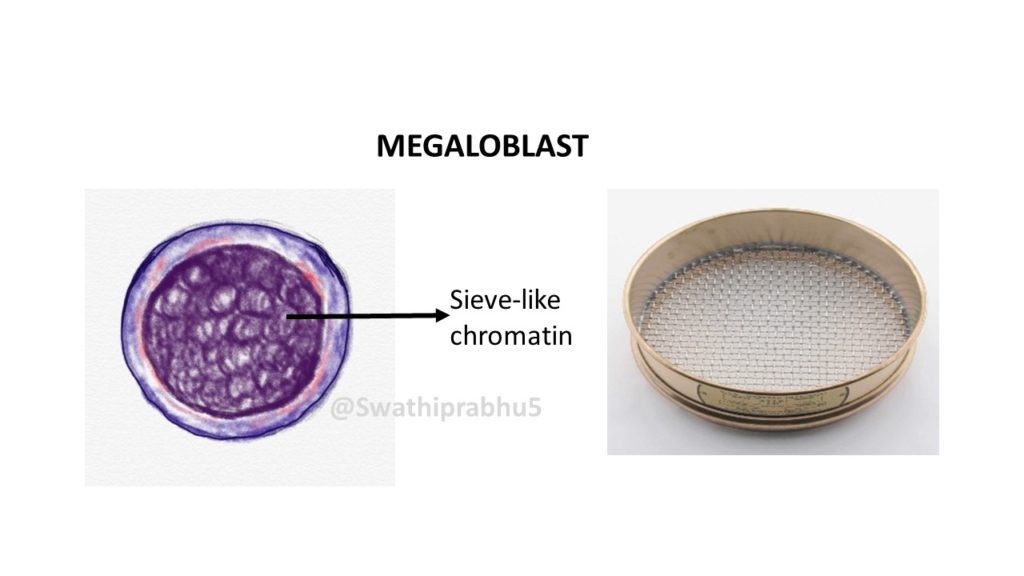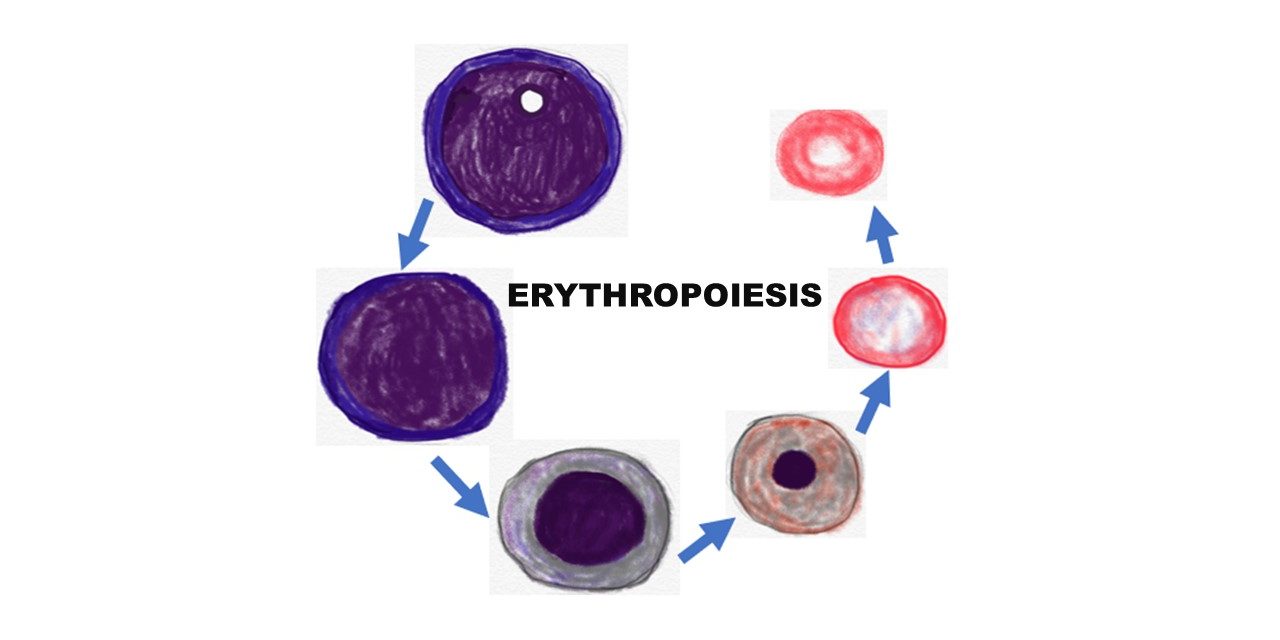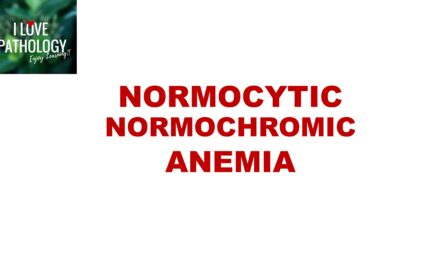What is erythropoiesis?
Development of mature red blood cells from precursor cell is known as erythropoiesis.
Overview of erythropoiesis
Hematopoiesis begins with stem cells. Hematopoietic stem cell under the influence of bone marrow microenvironment differentiates in to Committed Erythroid Progenitor cell.
Erythropoietin secreted by kidney (90%) plays a very important role in differentiating these committed erythroid progenitor cells in to Proerythroblasts

Describe the morphology of RBC precursors.
Proerythroblast: High nuclear to cytoplasmic ratio, immature nuclear chromatin,1-2 nucleoli, basophilic cytoplasm
Basophilic erythroblast (Early): High nuclear to cytoplasmic ratio, Chromatin condenses, no nucleoli, basophilic cytoplasm
Polychromatophilic erythroblast: Round nucleus with mature (clumped chromatin),no nucleoli, Cytoplasm is grayish in colour due to hemoglobin synthesis occurring at this stage.
Cell division ceases at this stage
Orthochromic erythroblast: Densly pyknotic nucleus with well hemoglobinized cytoplasm (reddish).
Reticulocyte: late erythroblasts extrude nuclei to become reticulocyte. Intermediate position between nucleated RBCs and mature red blood cells. Has bluish tinge due to RNAs

What is the morphology of normal erythrocyte (RBC)
Normal RBCs are almost the size of the nucleus of a mature lymphocyte. It lacks a nucleus. Cytoplasm is reddish with a central pallor which is 1/3rd the diameter of the cell

What is the life span of RBC?
Life span of RBC is 120 days
What is a reticulocyte?
Reticulocytes occupy intermediate position between nucleated RBCs and mature red cells.
It stains bluish due to retained RNAs in the cytoplasm. They are detected by supravital stains like Brilliant Cresyl blue and New methylene blue.
Applied aspects
What are megaloblasts?
Megaloblasts are erythroblasts which are typically seen in certain forms of anemia, associated with a deficiency of folic acid or of vitamin B12. Megaloblasts have open sieve-like nuclear chromatin. This is due to nuclear-cytoplasmic asynchrony where there is impaired nuclear maturation.

What regulates erythropoiesis?
Hypoxia is the most important driving factor for erythropoiesis. Whenever the oxygen level within the cytoplasm of erythropoietin-producing cells (90% of the erythropoietin is produced in kidney) fall below a critical value, erythropoietin is synthesized and secreted in to the blood stream which converts committed progenitor cells in to proerythroblasts causing maturation of RBCs (as illistrated in the above figure).
What is dyserythropoiesis?
Defective erythropoiesis is known as dyserythropoiesis in which red blood cells produced in the bone marrow are destroyed before their release or have short life span after entering circulation. It is seen in megaloblastic anemia, myelodysplasia.
Where do you see decrease and increase in RBC count?
Decrease RBC count is seen in anemia and increase RBC count is seen in polycythemia.











Recent Comments